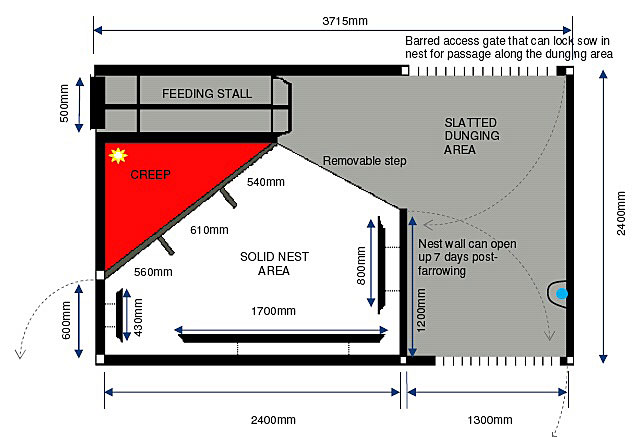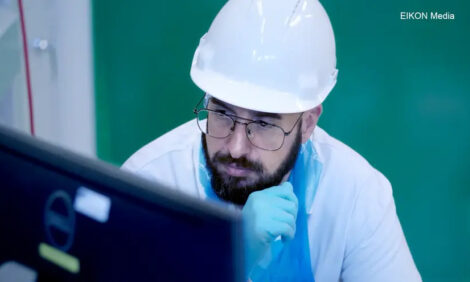



Is your farrowing environment PigSAFE?
We visit Dr Emma Baxter and the SRUC swine herd to see the innovative Piglet and Sow Alternative Farrowing Environment (PigSAFE) in action.PigSAFE stands for Piglet and Sow Alternative Farrowing Environment. It is a farrowing and lactation pen developed by Scotland’s Rural College (SRUC) and Newcastle University, along with industry and NGOs involved, to re-design the farrowing environment to optimise animal welfare and economics.
Meeting the needs of the sow
Dr Emma Baxter, joint lead researcher with Professor Sandra Edwards, says that PigSAFE is the culmination of almost 40 years of investigation into the behaviour and welfare of sows and their piglets.
“The first thing to consider when you’re designing an alternative system is how the design criteria can meet the animals’ needs, with the idea that if you meet the actual biological needs of the animal, the animal will perform well for you,” she explains. Pioneering studies were first conducted in the 1970s in the Edinburgh Pig Park (located on SRUC farmland in the foot of the Pentland Hills), which aimed to prove such a point by first considering the natural behaviours of the sow during farrowing and nursing. During one study, typical, domestic pregnant sows were released into a forested area and their behaviour monitored before, during and after farrowing.
It is well-known that sows of wild swine species will depart the herd and seek a safe, hidden space to build a nest, deliver their piglets, and suckle them for around 7 to 10 days before reintegrating into the herd. This behaviour is not possible in confined systems, such as farrowing crates: satisfactory nest building cannot take place as manipulable substrate is not generally provided and the sow’s movement is restricted; the sow is exposed on all sides so cannot be assured her piglets are safe from danger; and the sow is not able to fully interact with her piglets, again, because of limitations to her movement. It was argued by some that this innate behaviour was not strongly expressed in commercial sows but the Edinburgh Pig Park study proved that this behaviour was in fact strongly exhibited by all sows when provided with the environmental conditions to do so. Footage taken during the study clearly shows sows gathering substrate to build nests in protected areas away from the group.
Suppressing such behaviours is known to cause stress and frustration-related stereotypies in sows, which in turn can impact sow productivity and lead to displays of poor maternal behaviour. It has been proven that sows farrowing in crates, compared to loose systems, have an increased rate of stillbirths, a higher risk of savaging mortality and piglets wean at lower weights.
“The nest site that a sow chooses is often a cul-de-sac where they have a clear view of their surroundings and any potential danger,” explains Dr Baxter, “with PigSAFE we’re trying to provide that stimulus and the right conditions to nest-build and perform the behaviours that help a sow be a good mother. We know that the more they do that, the more prolactin and oxytocin they’ll produce, leading to a calmer farrowing period.”
The sows enter the PigSAFE pen around five days before they are due to give birth – they need this time to prepare the farrowing area and complete the natural sequence of preparation behaviours leading up to delivery of offspring.
“When the sow (or gilt) enters the pen, they’ll often lie in the dunging area where there is an opening through which they can see and interact with the sow in the neighbouring pen,” says Dr Baxter.
“The sows will be familiar with each other as they are group-housed between farrowings.
“Having another sow visible encourages nesting and delivering [of piglets] in the designated nesting area: when the hormones “kick in”, the neighbouring sow becomes the “enemy” which forces the sow to lie with her head facing the danger [at the nest entrance] and her rear end facing the gate [furthest away from the nest entrance and closest to the heated piglet area].
“This ensures that the sow avoids delivering in the dunging area, it means she efficiently utilises the sloping wall design to aid her movements which protects piglets from crushing, and also means we can get a good view when conducting our checks.” (see Figure 1.)

The original design of the PigSAFE pen includes a retractable nest wall and a larger dunging area. A newer design requires less engineering as the nest wall is not retractable, but makes use of a small pop-hole for piglets to move between the nest and the dunging area. © PigSAFE
Optimal use of space
The latest design of PigSAFE (Figure 1) provides the sow with optimal space for movement to and from the dunging area and the nest area with a footprint that is more commercially viable than the original prototype. It also provides piglets with easy access to a heated creep which is protected by roll bars, further reducing the risk of crushing.
There is the option of building in the sow feeding stall, as indicated in figure 1.
Safety
The separate creep and sow feeding stall allow easy access for individual examination and administration of treatment, and also facilitate tailored feeding regimes for piglets and each sow.
“This separate stall provides some reassurance for farmers that are nervous around a maternally defensive sow whilst ticking all the boxes for [certain] assurance schemes – the stall is designed only for feeding and treating the sow and is not suitable for farrowing purposes whatsoever,” Dr Baxter adds.
Separate dunging areas
The separate dunging area originally provided some hygiene problems with piglets urinating and defecating in the resting areas. One of the design developments included a retractable wall which meant the whole area could be open or split into two (see Figure 1). This design was costly and required more complex construction, so an easy alternative was to provide a small pop-hole in a solid wall through which piglets could easily move between the two areas, encouraging them to excrete in the dunging area only.
Improving the design
The details of the PigSAFE design are very important to how well it performs.
“In the last few years we have refined PigSAFE to adapt to a more commercially acceptable footprint without compromising the design features and dimensions that are critical to achieve good welfare and high productivity.
“For example, the nest design and dimensions are very specific, as are all the protective features within it. We have not changed these from the original prototype that has worked so well. However, we have been able to reduce the dunging passage depth and adapt the flooring systems to accommodate capturing slurry or use of a scraper underneath the flooring to remove dung.”
The latest system uses a combination of slatted and concrete flooring but there is the option to use alternatives, including rubber matting which can be more comfortable for the sow and less abrasive than concrete for the piglets.
These improvements are incorporated into the demonstration free farrowing house we visited at SRUC, built as part of the CIEL (Centre for Innovation Excellence in Livestock) funding initiatives.
The PigSAFE projects were funded by the Department for Environment, Food and Rural Affairs (DEFRA), with support from the Scottish Government. For more information on PigSAFE and other alternative farrowing systems visit www.freefarrowing.org.








